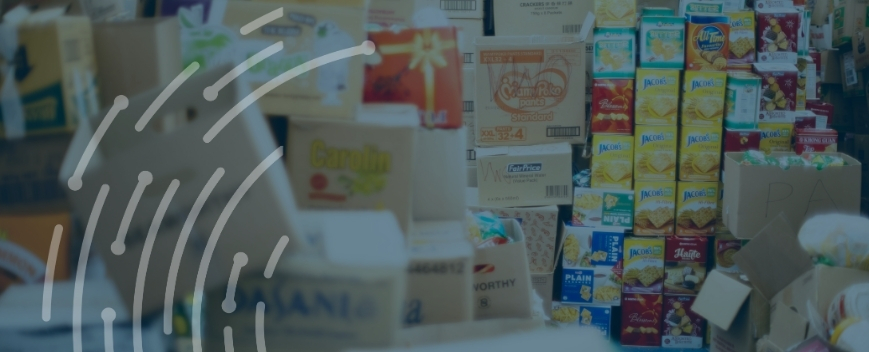Export controls

Access trade, receivables and supply chain finance
We assist companies to access trade and receivables finance through our relationships with 270+ banks, funds and alternative finance houses.
Get startedContents
Often when we think of the challenges of international trade, we are thinking about the difficulties of getting something into another country.
Countries have so many checks and balances in place designed to protect their citizens from potentially harmful goods coming from abroad.
Something that we can often forget is that sometimes countries have a vested interest in preventing a particular good from leaving the country.
When this is the case, countries implement export controls.
What are export controls?
Export controls are measures put in place by many governments to regulate and occasionally prevent the export of certain goods.
The principal objective of export controls is to ensure that exports of certain goods and technology are consistent with a country’s foreign and defence policies.
Countries often publish their export control lists so that prospective exporters are aware of the restrictions and limitations that they may be working with.
Export control lists, like this example from the Government of Canada, tend to include many goods that you would expect to be controlled – such as biological weapons, nuclear fusion reactors, or military helicopters – but may also have some unintuitive inclusions – such as peanut butter or cat food.
Most of the categories of goods that are on export control lists have ended up there as a result of bilateral or multilateral international agreements.
For example, the International Traffic in Arms Regulations (ITAR) regulates the export of defence and aerospace articles
The cat food controls, as another example, stem from Canada’s adherence to the European Union’s (EU) rules regarding pet food.
As part of the Canadian-European Comprehensive Economic and Trade Agreement (CETA), Canada would have agreed to control exports of pet food to any CETA-member country, likely as part of a negotiated exchange for another favourable term elsewhere in the 1598-page agreement.
It is important to remember that export controls do not ban the export of certain, rather they just require the exporter to acquire an export permit.
What is an export permit?
An export permit is a legally binding authorisation to export controlled goods.
These permits are issued by the government to prospective exporters following an application process so that controlled goods can be legally exported.
In the UK for example, exporters need to apply to the Export Control Joint Unit (ECJU) to receive an export permit.
The powers of the ECJU and many other export-permit-issuing agencies around the world do not stop at goods listed on the export control list.
Often they also have the power to invoke what is called an ‘end-use control’ onto any good – whether on the list or not – where there are specific concerns about military or weapons of mass destruction (WMD) end-use.
End-use controls have many similarities to dual-use goods, which is another category of goods often included on a nation’s export control list.
What are dual-use goods?
Dual-use goods are items that can be used for both civilian and military applications and, as such, tend to be heavily regulated.
For example, global position systems (GPS) and night vision technology both have very practical civilian applications and should reasonably be allowed to be sold to civilian consumers. They can also have strong military applications and may endanger lives if they fall into the wrong hands.
Since dual-use goods present this scenario of having both legitimate commercial and military applications they tend to be heavily protected by export controls.
This raises the question of who exactly classifies goods as being dual-use.
The Wassenaar Agreement
Today, 42 countries are members of the Wassenaar Agreement, a voluntary export control regime where members exchange information on transfers of conventional weapons and dual-use goods and technologies.
Member nations meet every six months (or earlier on an as-needed basis) to update what should be defined as a dual-use good and to exchange information about all export licences denied on proposed transfers to non-Wassenaar members.
Wassenaar does not target any particular region – unlike its predecessor, the Cold War-era Coordinating Committee for Multilateral Export Controls (COCOM) which existed to restrict exports to the former Soviet Union and Eastern bloc.
Instead, the agreement focuses on “states of concern” for its members.
How do I know if I need an export permit?
Each country will publish its own export control list using its own unique system. If the item you are looking to export is on this list, you will need to get an export permit.
For example, the USA uses export control classification numbers (ECCN) to determine which goods require an export permit.
An ECCN is a five-digit alpha-numeric designation used by the US Department of Commerce on its Commerce Control List (CLL) – the list the US uses for export control purposes.
ECCN items are based on the nature of the product and divided into ten broad categories with five product groups for each.
This classification system is different from the US Bureau of Census’ Schedule B number – which is used to collect trade statistics, and from the Harmonised Tariff System (HTS) codes used for determining import duties.
- Customs Resources
- All Customs Topics
- Podcasts
- Videos
- Conferences














